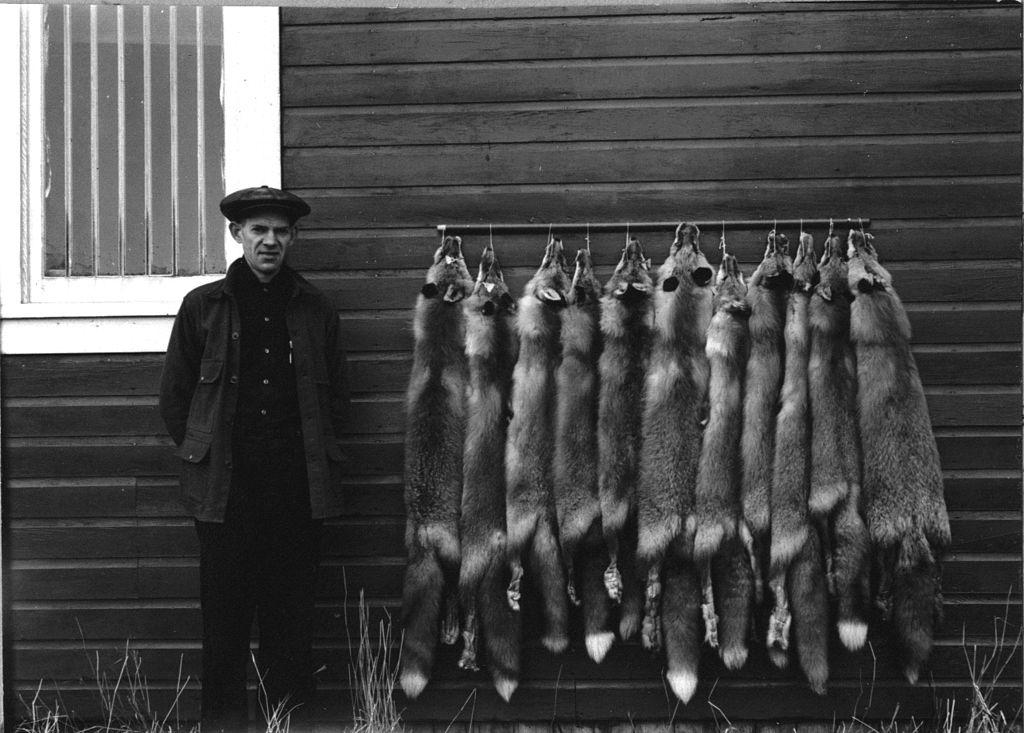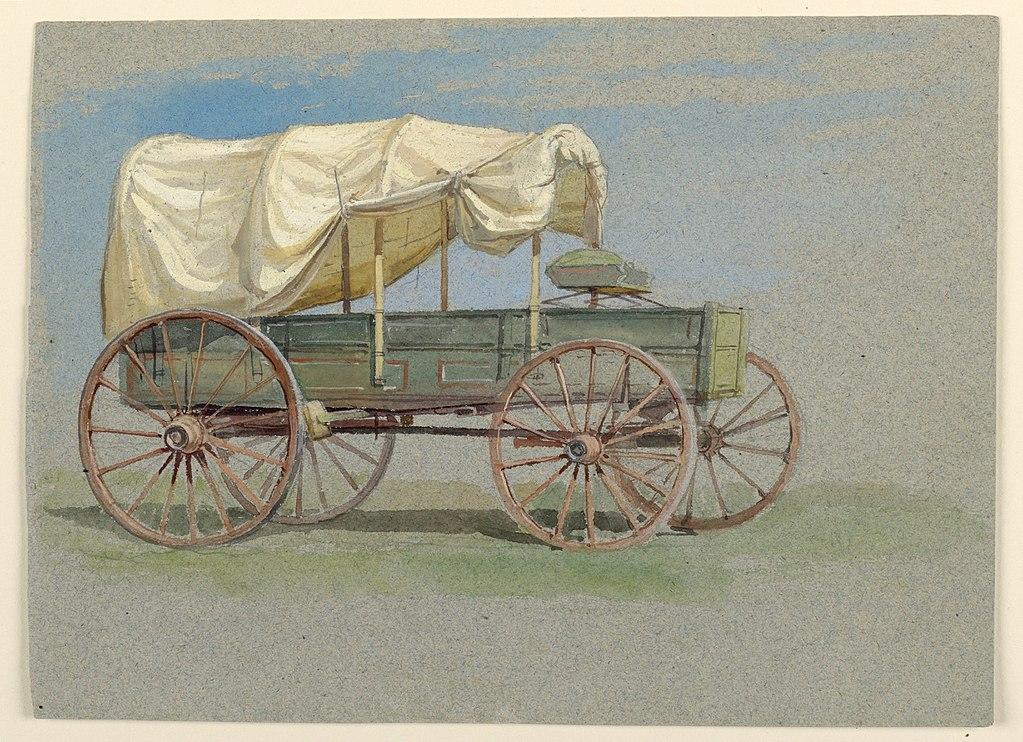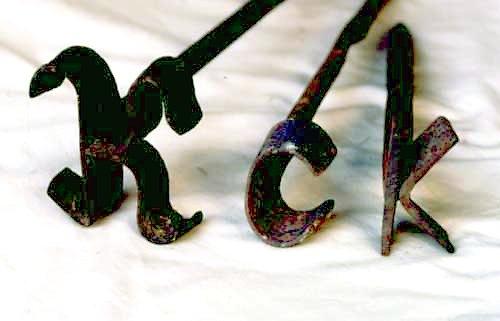- Accueil
- Conquest of the west
- Farmers, indians and cowboys
Farmers, indians and cowboys
"The promised land of great need"
The quest for furs was the primary commercial motivation for the Dutch, French and British to explore and colonise North America. As they expanded westwards, trappers and hunters outpaced the settlers, seeking new supplies of beaver pelts and other animals bound for Europe. In exchange for furs, the Amerindians generally receive calico, knives, axes and other tools, beads, guns, ammunition, animal traps, rum, whisky and salt pork.

GLOSSARY
| furs | fourrures | westwards | vers l'ouest |
| trappers | trapeurs | hunters | chasseurs |
| settlers | colons | seeking | à la recherche |
| beaver pelts | peaux de castor | calico | calicots |
| knives | couteaux | axes | haches |
| beads | perles | guns | armes |
| ammunition | munitions | animal traps | pièges |
| rum, whisky | rhum, whisky | salt pork | porc salé |
The covered wagon

The covered wagon or prairie wagon, historically also referred to as an ambulance, a whitetop, or a prairie schooner, was a vehicle usually made out of wood and canvas that was used for transportation, prominently in 19th-century America. With roots in the heavy Conestoga wagon developed for the rough, undeveloped roads and paths of the colonial East, the covered wagon spread west with American migration.
The farrier uses the following tools to make and repair the iron tires on stick wheels: a forge, iron, anvil, hammers, pliers
GLOSSARY
| schooner | goelette | canvas | toile |
| roots | racines | rough | rugueux |
| to spread | se répandre | iron | le fer |
| an anvil | une enclume | hammers | marteaux |
| pliers | pinces | a forge | une forge |
Cowboys
In the 19th century, cattle ranches in the West fed the entire country, so the cowboy's job was to drive the cattle across the southern Great Plains, in the absence of a railroad.
In the American West, branding developed with the cowboys. Branding was developed to identify the owners of thick-hided animals such as cows and horses. The tool used consisted of an iron rod with the ranch owner's mark at the end.

